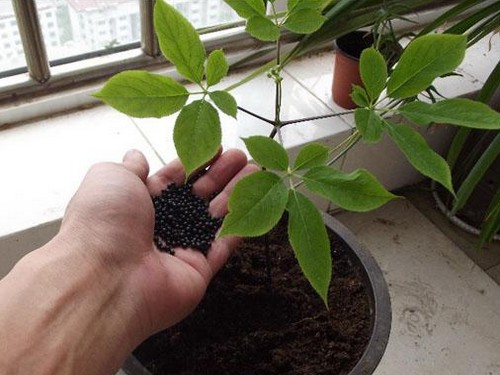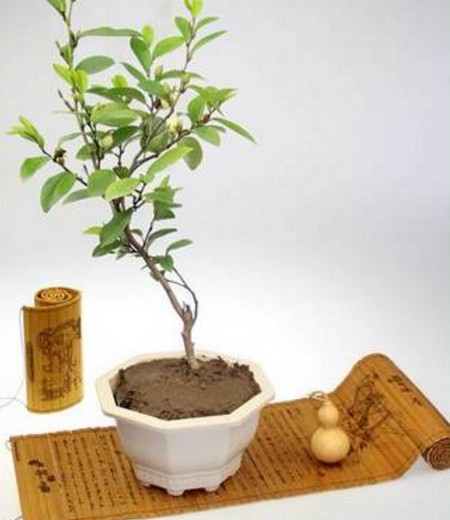Sowing method of potted flowers
Environmental protection is a virtue. However, if you can combine some "green" gadgets with your potted plants, it will undoubtedly be icing on the cake. After preparing flowerpots, soil, shovels and seeds, you can plant them yourself and contribute to the protection of the earth's environment. Specific sowing methods are as follows:

1. Sowing density
Pot sowing can be based on the actual situation of each hole sowing 1 or more seeds. Seedling pot sowing, general varieties can be sown 1-2 thousand seeds per square meter. Divide seeds evenly into several parts according to the area of sowing seedling pot, one part for each pot.
2. Sowing
Larger seeds can be evenly spread on the substrate, or drill, smaller seeds such as petunia, snapdragon, can be mixed with clean sand before sowing. Extra large seeds such as sweet pea and cyclamen can be ordered.
3. Depth of sowing and soil covering
The depth of sowing is determined by the size of the seed and the light requirement for germination. The seed is usually sown at a depth of 2-3 times the seed diameter. Some varieties such as petunia, summer violets, star flowers, four seasons begonia, germination needs light, do not need to cover the substrate, directly sown in the soil surface; some varieties need to be slightly covered, such as a string of red, snapdragon, calyx distance flowers; some seed coverage should be slightly thicker, sown deeper, such as ornamental millet. The recommended covering material is coarse vermiculite, which has good water retention and air permeability.
4. Spray water
After sowing or mulch, spray water once again with a fine spray nozzle to irrigate thoroughly, allowing the seeds to fully contact the substrate and mulch material.
5, covering
Cover the seeding pot with glass, plastic film or plastic film to maintain air humidity and keep warm in winter. Summer can not cover film, cover film can not be sealed, both sides must be ventilated.
6. Shade
If summer sowing, must shade, otherwise too strong light, moisture evaporation exuberant, will affect seed germination.
After understanding whether different seeds like light, let's talk about an important factor to consider when sowing. Season, different flowers and plants have different sowing seasons, usually spring and autumn, and some can only be autumn or spring. I have seen some flower friends, see other people's flowers look good, and buy seeds to sow quickly. This practice is confused. Some flowers are afraid of heat. If sowing in summer is doomed to failure.
1. Choose loose and breathable soil (generally fine peat or rotting soil) and put it into flowerpots or seeding trays.
3. Pour the soil thoroughly and sprinkle the seeds evenly on the soil layer (it can also be soaked in the basin after sowing).
4. Fine seeds (such as thyme petunia seeds, etc.) do not need to be covered with soil, but pay attention to maintaining soil moisture, spray water with a fine nozzle to moisturize, and it is easy to wash seeds away or flush them to the depth of the soil. Small seeds are not easy to sprout. Large seeds should be covered with soil 2-3 times the size of the seed.
5. Most seeds germinate at 20-25 degrees Celsius. It should be noted that some seeds must germinate under low temperature conditions, such as dahurian delphinium, most vanilla seeds sown in autumn and winter should not be higher than 25 degrees Celsius, spring and summer seeds should not be lower than 20 degrees Celsius. If the temperature is not reached, use plastic wrap to increase the temperature and also have moisturizing effect. In summer, all seeds should be placed in a cool place, shaded from rain. In winter, we should pay attention to keeping warm and preventing frost. Before the seeds germinate, they have not grown roots. We need to artificially supplement water to maintain life. The soil should maintain humidity but not waterlogging.
6, if covered with plastic wrap to be seeds germinated in time to remove the flowerpot in time to have scattered light to see the light, and seeds germinated in time to apply some liquid fertilizer such as potassium dihydrogen phosphate concentration in about 200 times the concentration is not too high, and so on after growing up according to the growth of the plant fertilization.
7. When the seeds grow to 2-3 leaves, they can be transplanted, and when 5-6 leaves are planted in time. Before planting, put a little decomposed organic fertilizer (homemade organic fertilizer) and slow-release granular fertilizer (such as compound fertilizer) in the flowerpot.
Time: 2019-06-12 Click:
- Prev

Pruning method of Michelia bonsai
Michelia likes weak shade, not resistant to drying and exposure, like the soil layer of deep and fertile acid soil, cold-resistant, should be planted in the leeward. The fertilizer and water management of potted Michelia is similar to that of Lamei, except that it is shade-tolerant and requires higher air and soil moisture. Its flowers give off a stronger banana smell when the temperature is higher.
- Next

Management methods of potted Flower Seeds after sowing
There are many flowers suitable for sowing in spring, such as sunflower, peacock chrysanthemum, marigold, impatiens, petunia, sunflower, chicken crown, carnation, sunflower, Persian chrysanthemum, marigold, centennial, medal chrysanthemum, melon leaf chrysanthemum, summer chrysanthemum, Xiaoli, tricolor, periwinkle, carnation, African impatiens and so on.
Related
- Fuxing push coffee new agricultural production and marketing class: lack of small-scale processing plants
- Jujube rice field leisure farm deep ploughing Yilan for five years to create a space for organic food and play
- Nongyu Farm-A trial of organic papaya for brave women with advanced technology
- Four points for attention in the prevention and control of diseases and insect pests of edible fungi
- How to add nutrient solution to Edible Fungi
- Is there any good way to control edible fungus mites?
- Open Inoculation Technology of Edible Fungi
- Is there any clever way to use fertilizer for edible fungus in winter?
- What agents are used to kill the pathogens of edible fungi in the mushroom shed?
- Rapid drying of Edible Fungi

